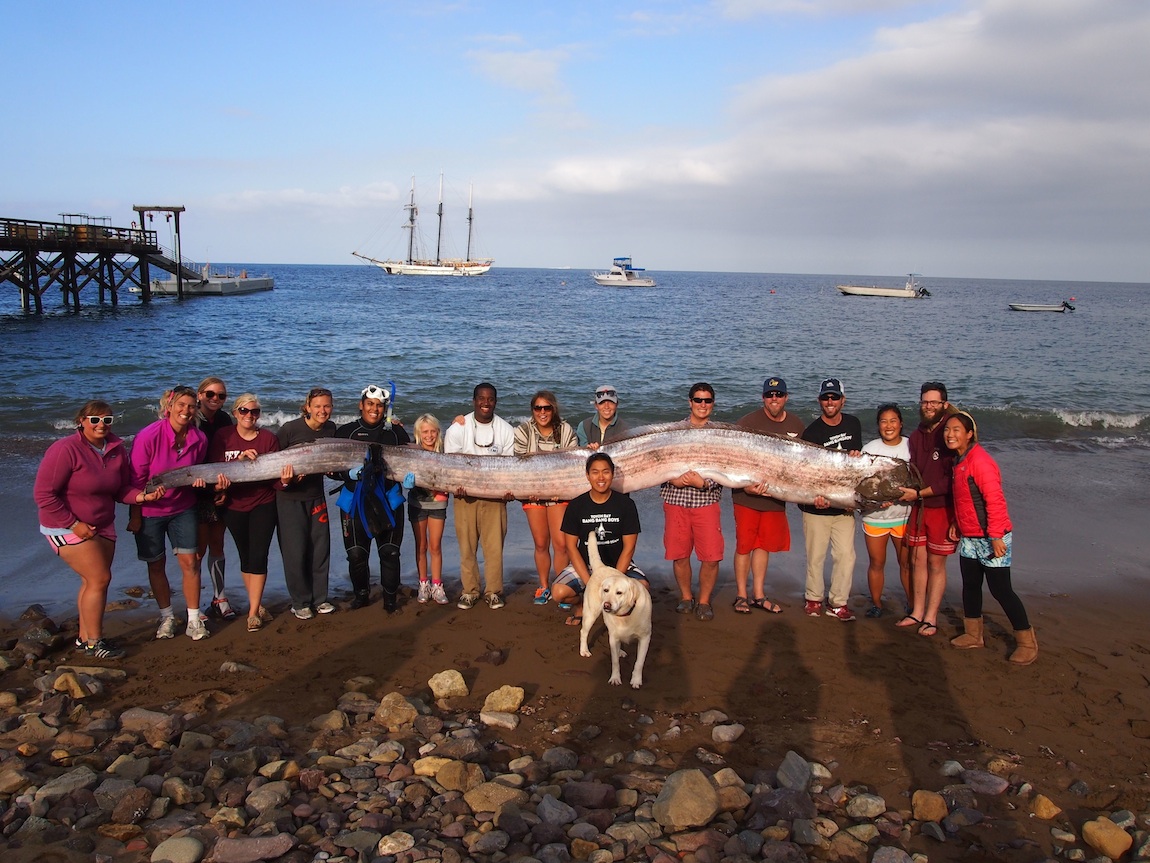
18-Foot-Long Deep-Sea Creature Found off California

The staff and kids at a Southern California educational facility got quite a surprise when an 18-foot-long (5.5 meters) serpentlike sea creature washed up near the shore.
While swimming in about 20 feet (5 meters) of water, dive instructor Jasmine Santana saw a large, silvery, slender figure on the sandy bottom on Sunday (Oct. 13). It turned out to be a dead oarfish, a rare animal that is typically found in much deeper waters, said Jeff Chace, with the Catalina Island Marine Institute, which teaches kids about marine science.
Santana dragged the fish to shore, where the staff took photographs and then put it on ice to show to their students the next day. "The kids were stunned, excited, giggly," Chace told LiveScience's OurAmazingPlanet.
Oarfish are rarely found near the shore, and usually only arrive there once they are sick or dead, Chace said. This animal appeared to die of natural causes. Nobody at the institute had seen one before, he added.
The animals live in the deep ocean and are believed to grow up to nearly 50 feet (15 m) long, Chace said. This makes them the world's longest bony fish, a group that includes almost all fish except sharks and rays (whale sharks are the largest fish in the ocean). The fish swim with their head upright and their tail hanging beneath them, and can easily move backward and forward and up and down quickly, observations of the fish have shown.
In August 2011, a remotely operated vehicle (ROV) captured a rare video of a live oarfish in the Gulf of Mexico. Oarfish are so-called because of appendages at the end of their pelvic spines that look like paddles, which are used to help them balance and swim upright.
Staff members at the institute plan to bury the oarfish by the ocean, Chace said.
Sign up for the Live Science daily newsletter now
Get the world’s most fascinating discoveries delivered straight to your inbox.
Email Douglas Main or follow him on Twitter or Google+. Follow us @OAPlanet, Facebook or Google+. Original article on LiveScience's OurAmazingPlanet.











